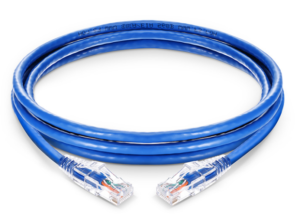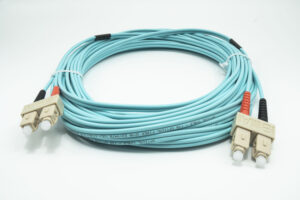Patch cables are essential for the operation of electronic and optical equipment, allowing system performance to run at the desired high rates and bandwidth.
A patch cable is used to link two electrical or optical devices for signal routing. This is typically used in network applications to “patch” a signal from one hub, switch, or router to another. Patch cables can be used to convey a number of signals, including:
- telephone
- audio
- video
- digital signals for networked and non-networked applications
The terms “patch cable” and “patch cord” are commonly used interchangeably. Patch cables, on the other hand, are often used for non-networked applications such as wiring audio components.
Routers, also known as patch panels, are wall-mounted hardware assemblies that have ports for connecting and managing incoming and outgoing cables in a Local Area Network (LAN). Circuits in a patch panel can be arranged by plugging and unplugging the relevant patch wires.
Patch cables are constructed from a variety of cable types, including coaxial, UTP, STP, Copper patch cords and fibre patch cable. Pigtails are also cable assemblies that have only one end terminated with exposed bare wires. The installer can then adjust the termination in the field for a direct and lasting connection.
Copper Patch Cables

Ethernet and patch cables use copper because of its
- tensile strength,
- ductility,
- thermal expansion,
- corrosion resistance, and
- pliability.
Ethernet cables and patch cables can be interchanged. Patch cables, on the other hand, are typically shorter cable assemblies that are used to link equipment in computer bays or racks or to connect peripheral devices to the computer.
They are often utilised across short distances and do not exceed two metres in length. Longer cables are required in some applications for looping, to allow for future movement, or to reduce slack and potential damage or kinking. Some copper patch cables, however, are only a few inches long.
Category 6A, 6, 5e, or 5 patch cables are commonly used in LANs. Manufacturers of these cables vary their structures to allow for varying electrical performance, thus it’s important researching the cable brands and technology.
While network rates might be quite rapid, a patch connection can cause signal blocking and degradation. As a result, choosing the right patch cable for the intended network application and environment is critical. It has the potential to increase the overall performance of the network.
Fibre Optic Patch Cables

A fibre optic patch cord, often known as a “jumper cable,” is a cable assembly that includes a fibre optic cable terminated at either end. Because of the pre-terminated connectors, it may be easily linked to an optical switch, CATV, or other telecommunications equipment. It is the link between an optical transmitter, receiver, and terminal box. These devices can make use of single-mode or multimode fibre patch cables, as well as a number of fibre optic connectors.
Fibre patch cords have assisted many individuals in achieving larger bandwidths and faster speeds, with the benefit of extending across a wide range of constructions. The introduction of fibre patch cable kinds and their applications above may provide some guidance on which fibre jumpers to select.
The specifications of common fibre patch cables, such as fibre cable mode and connection types, are crucial. If your cabling environment is quite demanding, the above-mentioned special fibre patch cord will suffice. When you are unable to make a decision, seeking professional assistance is always the best option to avoid damages. Opt for Fibre optic cable suppliers.

